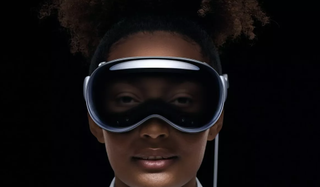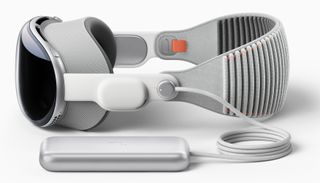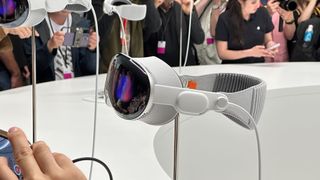Apple tells developers NOT to use “virtual reality” when talking about Vision Pro
Apple is attempting to reshape the narrative with “spatial computing”

The Vision Pro will go on sale next month, and we’ve just learned that Apple has requested that app developers for visionOS (the operating system that runs on the headset) don’t allude to visionOS apps as “AR” or “VR”.
We first heard about Apple’s newest innovation in June 2023 - where it was marketed as a spatial computer that combines digital content and the user’s physical surroundings. It’s also equipped with some serious Apple graphics specs and visionOS, which Apple calls the “world’s first spatial computing system”.
At first glance, the Vision Pro certainly appears to be similar to existing Virtual Reality (VR) and Augmented Reality (AR) headsets, so it’s interesting that Apple is at pains to ensure that it isn’t mistaken for one. The de facto ban on AR and VR references (as well as Extended Reality (XR) and Mixed Reality (MR)) was spotted in the guidelines of the new Xcode (Apple’s suite of developer tools) update that came after the announcement that Vision Pro devices will be in stores in early February.

Apple lays down the law
This recommendation is pretty explicitly laid out on a new Apple Developer page which goes through what a developer needs to do to prepare their app for submission to the App Store.
Apple insists that developers will also have to use the “visionOS” branding beginning with a lowercase “v” (similar to how they brand their flagship operating system for desktop and laptop devices, macOS), and to use the device’s full name, “Apple Vision Pro,” when referring to it. These aren’t as unexpected as Apple’s more notable instructions to avoid VR and AR, however. According to Apple, visionOS apps will not be considered VR, XR, or MR apps but as “spatial computing apps”.
It’s an interesting move for a number of reasons; coining a new term can be confusing to people, meaning that users will have to build familiarity and actually use the term for it to stick, but it also means that Apple can differentiate itself from the pack of AR/VR devices out there.
It’s also a pivot from messaging that until now has relied on existing terms like augmented reality and virtual reality. Most of Apple’s current marketing refers to the Vision Pro as a “spatial computing” platform, but at the Worldwide Developers Conference (WWDC) in 2023, Apple’s annual event for Apple platform developers, Apple CEO Tim Cook introduced the Vision Pro as an “entirely new AR platform.” Materially, this is mainly a marketing and branding move as Apple becomes more confident in its customers’ understanding of what the Vision Pro actually is. 9to5Mac reports that Apple engineers referred to visionOS as xrOS leading up to the device’s official announcement.
Get the best Black Friday deals direct to your inbox, plus news, reviews, and more.
Sign up to be the first to know about unmissable Black Friday deals on top tech, plus get all your favorite TechRadar content.

Apple charts its own course
The pointed effort to distinguish itself from its competitors is an understandable move from Apple considering that some other tech giants have already attempted to dominate this space.
Meta, Facebook and Instagram’s parent company, was one of the most noticeable examples. You might have a not-so-distant memory of a certain “metaverse". The metaverse has seen a reception most would call lukewarm, even at its peak, and Apple is making a bold attempt to have its own association in people’s minds, with Apple’s VP of global marketing Greg Joswiak dismissing the word “metaverse” as one he’ll “never use" according to 9to5Mac.
I enjoy watching Apple make bolder moves into existing markets because it’s often when we’ve seen new industry standards emerge, which is always exciting - no matter whether you want to call it AR, VR, or spatial computing.
YOU MIGHT ALSO LIKE...
Kristina is a UK-based Computing Writer, and is interested in all things computing, software, tech, mathematics and science. Previously, she has written articles about popular culture, economics, and miscellaneous other topics.
She has a personal interest in the history of mathematics, science, and technology; in particular, she closely follows AI and philosophically-motivated discussions.
